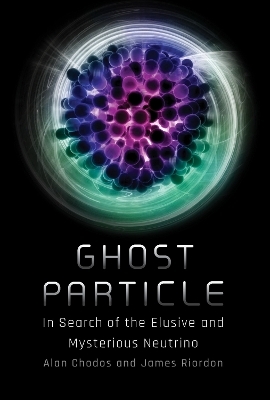
The c and a-Theorems and the Local Renormalisation Group
Springer International Publishing (Verlag)
978-3-319-53999-7 (ISBN)
The Zamolodchikov c-theorem has led to important new insights in the understanding of the Renormalisation Group (RG) and the geometry of the space of QFTs. The present primer introduces and reviews the parallel developments of the search for a higher-dimensional generalisation of the c-theorem and of the Local RG (LRG).
The idea of renormalisation with position-dependent couplings, running under local Weyl scaling, is traced from its early realisations to the elegant modern formalism of the LRG. The key rôle of the associated Weyl consistency conditions in establishing RG flow equations for the coefficients of the trace anomaly in curved spacetime, and their relation to the c-theorem and four-dimensional a-theorem, is explained in detail.
A number of different derivations of the c-theorem in two dimensions are presented and subsequently generalised to four dimensions. The obstructions to establishing monotonic C-functions related to the trace anomaly coefficients in four dimensions are explained. The possibility of deriving an a-theorem for the coefficient of the Euler-Gauss-Bonnet density is explored, initially by formulating the QFT on maximally symmetric spaces. Then the formulation of the weak a-theorem using a dispersion relation for four-point functions is presented.
Finally, the application of the LRG to the issue of limit cycles in theories with a global symmetry is described, shedding new light on the geometry of the space of couplings in QFT.
Graham Shore is Professor of Theoretical Physics at Swansea University in the U.K. He graduated from the University of Edinburgh in 1974, where he was awarded the Tait Medal. He received his PhD from the University of Cambridge in 1978. He has held research positions at Harvard and Cornell Universities, the Universities of Bern and Geneva, Imperial College, London, and has spent seven years as a fellow and scientific associate at CERN, Geneva. He was Head of the Department of Physics at Swansea University from 2007 to 2012 and Deputy Head of the School of Physical Sciences. He has published over 80 papers on quantum field theory, particle physics and gravity. He is perhaps best known for his work with Gabriele Veneziano on anomalous U(1) symmetry in gauge theories and its role in polarized QCD phenomenology, particularly deep-inelastic scattering and the `proton spin. He has also worked extensively on quantum field theory in curved spacetime, especially on curvature-induced symmetry breaking and the realization of causality, unitarity and analyticity in theories apparently exhibiting superluminal propagation. He has served on many research council panels in the U.K., and chaired the Education and Training committee of the Particle Physics and Astronomy Research Council from 2004-06, sitting on PPARC Council by invitation. He was elected a Fellow of the Learned Society of Wales in 2011.
Introduction.- Renormalisation and the Conformal Anomaly.- The Local Renormalisation Group and Weyl Consistency Conditions.- c-Theorem in Two Dimensions.- Local RGE and Weyl Consistency Conditions in Four Dimensions.- c, b and a-Theorems in Four Dimensions.- Global Symmetries and Limit Cycles.- Summary and Outlook.
| Erscheinungsdatum | 19.04.2017 |
|---|---|
| Reihe/Serie | SpringerBriefs in Physics |
| Zusatzinfo | VII, 102 p. 5 illus., 3 illus. in color. |
| Verlagsort | Cham |
| Sprache | englisch |
| Maße | 155 x 235 mm |
| Themenwelt | Naturwissenschaften ► Physik / Astronomie ► Hochenergiephysik / Teilchenphysik |
| Naturwissenschaften ► Physik / Astronomie ► Theoretische Physik | |
| Naturwissenschaften ► Physik / Astronomie ► Thermodynamik | |
| Schlagworte | Global symmetry and limit cycles • Local Weyl scaling • Mathematical methods in physics • Mathematical Physics • Physics • Physics and Astronomy • Position-dependent couplings in QFT • Quantum Field Theories, String Theory • Statistical Physics • Weyl consistency condition • Zamolodchikov c-theorem |
| ISBN-10 | 3-319-53999-X / 331953999X |
| ISBN-13 | 978-3-319-53999-7 / 9783319539997 |
| Zustand | Neuware |
| Informationen gemäß Produktsicherheitsverordnung (GPSR) | |
| Haben Sie eine Frage zum Produkt? |
aus dem Bereich


